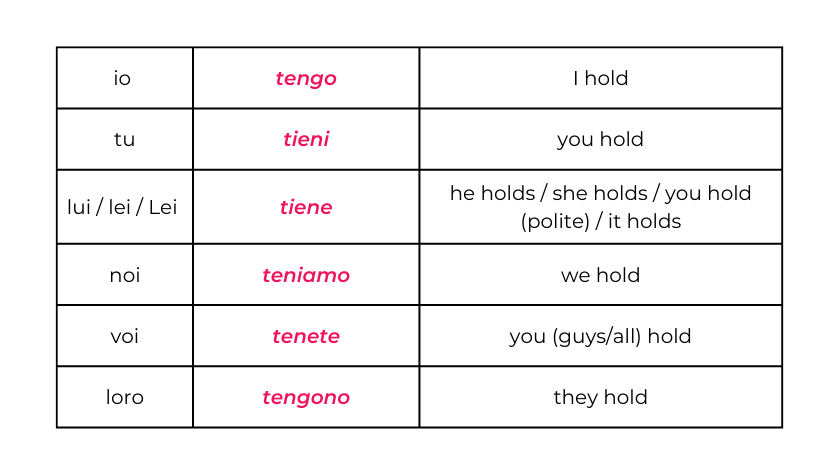As it would turn out, the most common and essential verbs in Italian also happen to be the most irregular verbs. Irregular verbs are verbs that don’t follow the consistent pattern of conjugation that we have already outlined in our previous post.
Many of the Present Tense Suffixes have similarities to their regular counterparts, such as always ending in the same vowel, but most of the time these common irregular verbs take a completely different form to their Infinitive form.
The same thing occurs in English with the verb ‘to be’, one of the only verbs in English that still follows a relatively extensive conjugation pattern (I am, you are, he is, etc.), none of which resemble the Infinitive form ‘to be’ in any way.
For these verbs, the best strategy is to learn their forms by memory in context, so that means learning them within short sentences that you would really say. As they are among the most frequently used verbs, you should learn their irregular forms quite quickly with practice.
Present Tense Conjugation of Irregular Italian Verbs
ESSERE to be
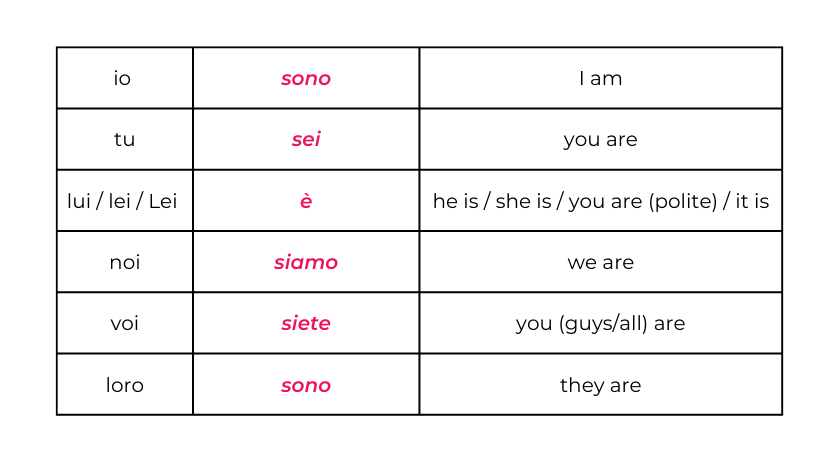
STARE to be / to stay
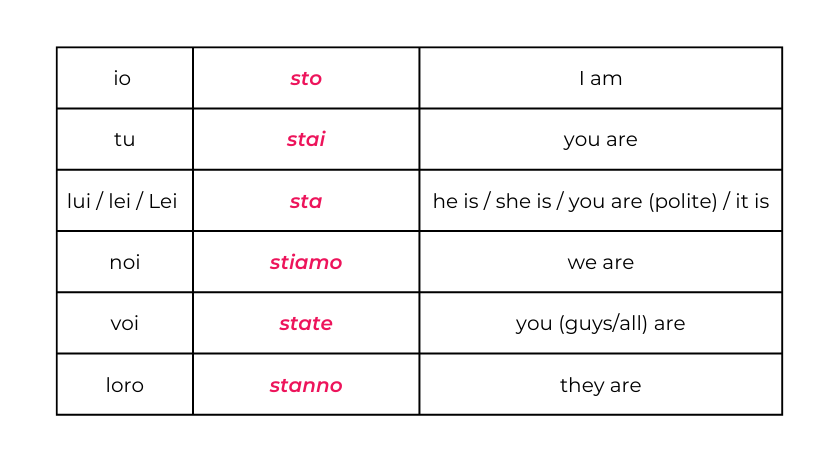
AVERE to have
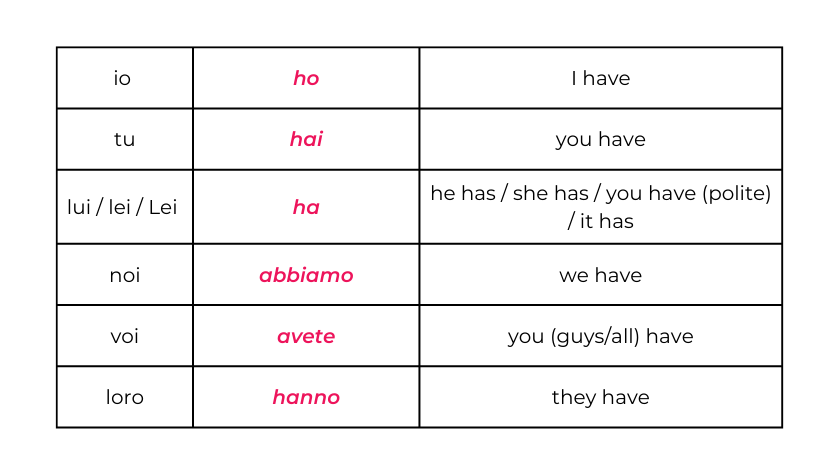
FARE to do
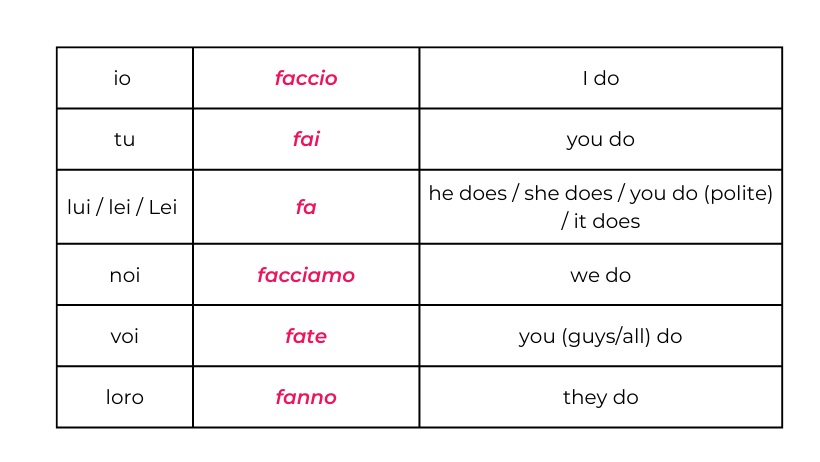
ANDARE to go
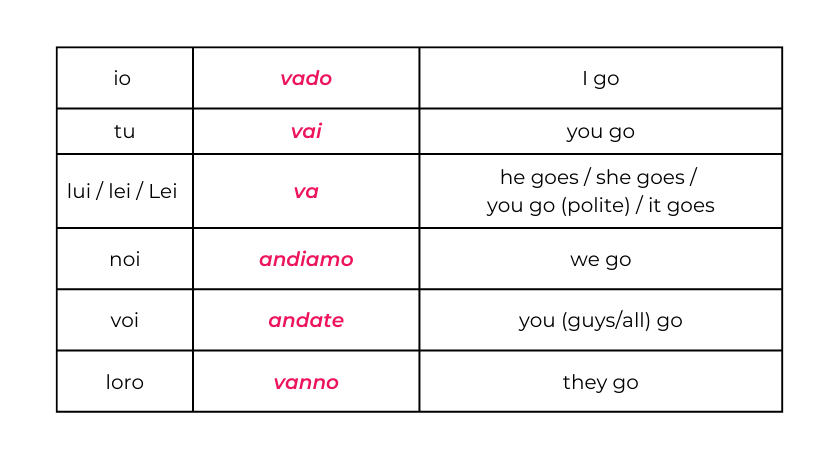
DIRE to say
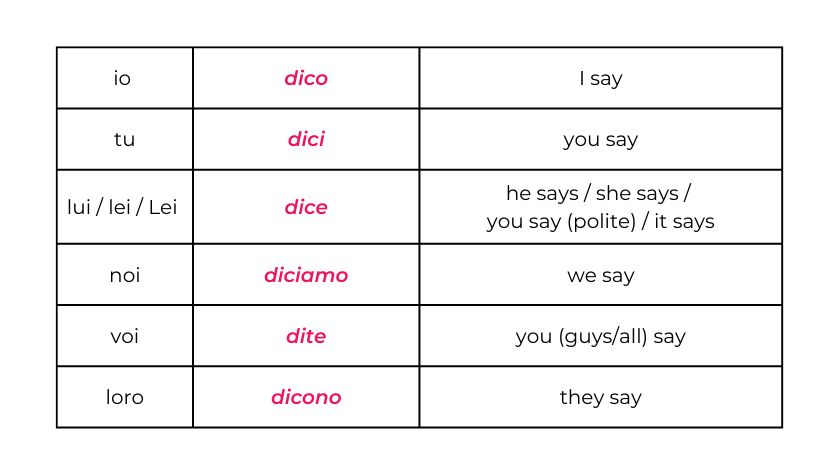
Common Irregular Verbs in Italian
The following verbs belong to different classes of irregular verbs which each contain verbs that follow the same irregular pattern. This means that once you learn the irregular conjugation pattern for one verb, you will be able to apply the same irregular Suffixes to all other verbs within the same class.
Keep in mind that irregular verbs aren’t always irregular for each Person. In most cases, 1st Person Plural (NOI – ‘we’) and 2nd Person Plural (VOI – ‘you guys’) always follow the regular pattern of conjugation, as you will see in the upcoming examples.
-ISC Verbs
There is a set of -IRE verbs which add -ISC between the Root and the regular Suffixes.
Frequent verbs that follow this pattern include:
◉ CAPIRE ➔ to understand
◉ FINIRE ➔ to finish
◉ PREFERIRE ➔ to prefer
◉ COSTRUIRE ➔ to construct
◉ PULIRE ➔ to clean
This irregular pattern is illustrated below with the verbs CAPIRE (‘to understand’) and FINIRE (‘to finish’). Notice how the irregular -ISC infix occurs with all Singular Subjects and 3rd Person Plural (LORO – ‘they’) but never with 1st Person Plural or 2nd Person Plural.
CAPIRE to understand
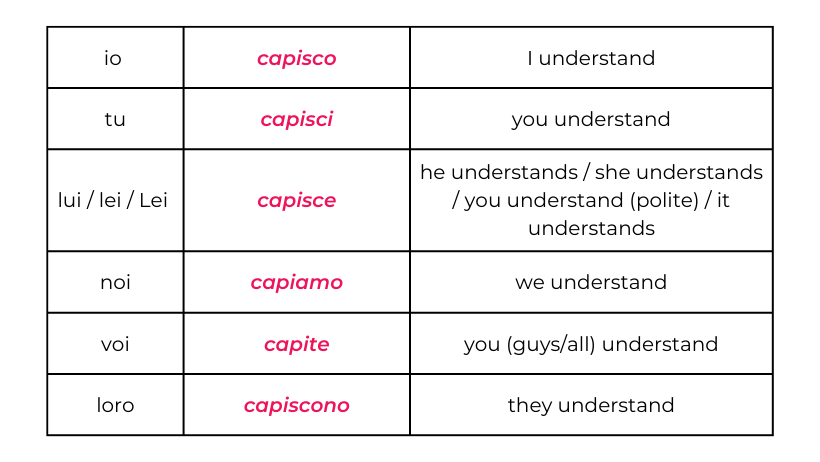
FINIRE to finish
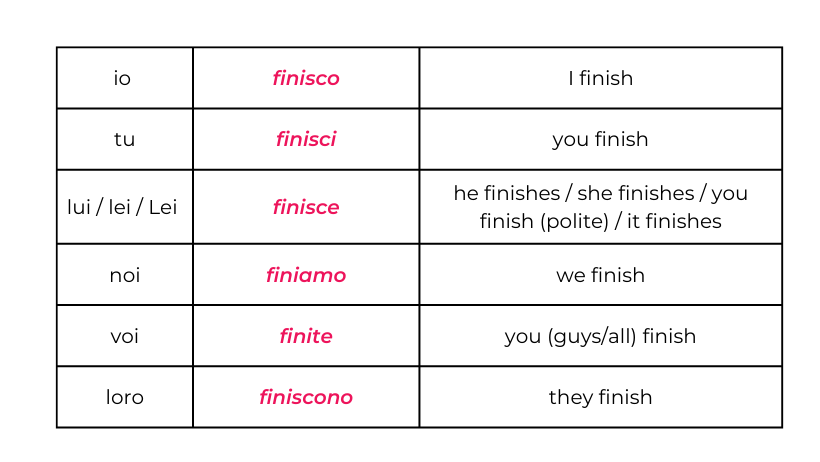
-GLIERE Verbs
Verbs in this group only have an irregular form in the 1st Person Singular (IO – ‘I’) and 3rd Person Plural (LORO – ‘they’). For these Subjects, the somewhat difficult Italian -GLI- sound is replaced with the easier -LG- sound with a hard G that is followed by an -O.
Frequent verbs that follow this pattern include:
◉ TOGLIERE ➔ to remove
◉ SCEGLIERE ➔ to choose
◉ SCIOGLIERE ➔ to melt
This irregular pattern is illustrated below with the verbs TOGLIERE (‘to remove’) and SCEGLIERE (‘to choose’).
TOGLIERE to remove
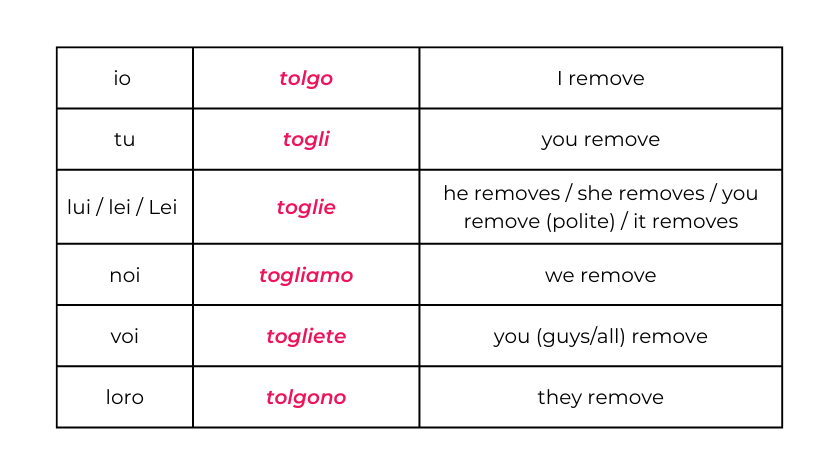
SCEGLIERE to choose
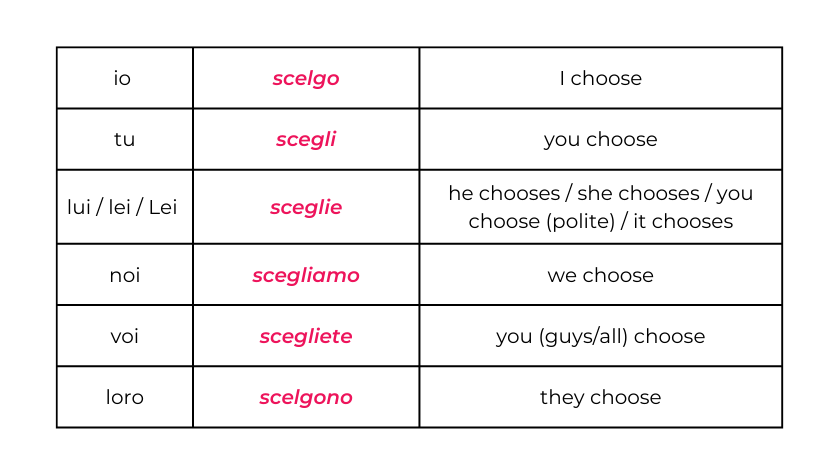
-NG Verbs
This group consists of verbs from both the -ERE and -IRE verb categories and has two irregular processes that occur. Firstly, the 1st Person Singular (IO – ‘I’) and 3rd Person Plural (LORO – ‘they’) have a /g/ sound inserted between the Root and the Suffix. Secondly, for verbs that have and -E in the last syllable of the Root, the Singular Subjects in both the 2nd Person (TU – ‘you’) and 3rd Person (LUI/LEI – ‘he / she / you (polite) / it’) turn the -E vowel into a diphthong -IE.
Frequent verbs that follow these patterns include:
◉ VENIRE ➔ to come
◉ TENERE ➔ to hold
◉ MANTENERE ➔ to maintain
◉ RIMANERE ➔ to remain
This irregular pattern is illustrated below with the verbs VENIRE (‘to come’) and TENERE (‘to hold’).
VENIRE to come
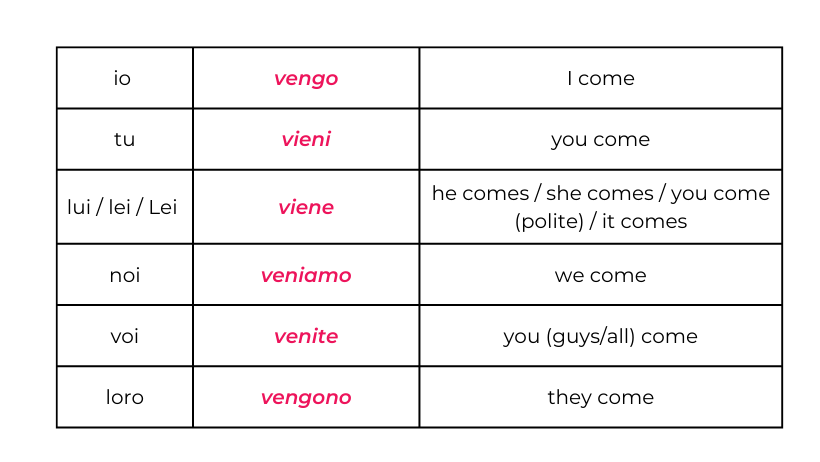
TENERE to hold
